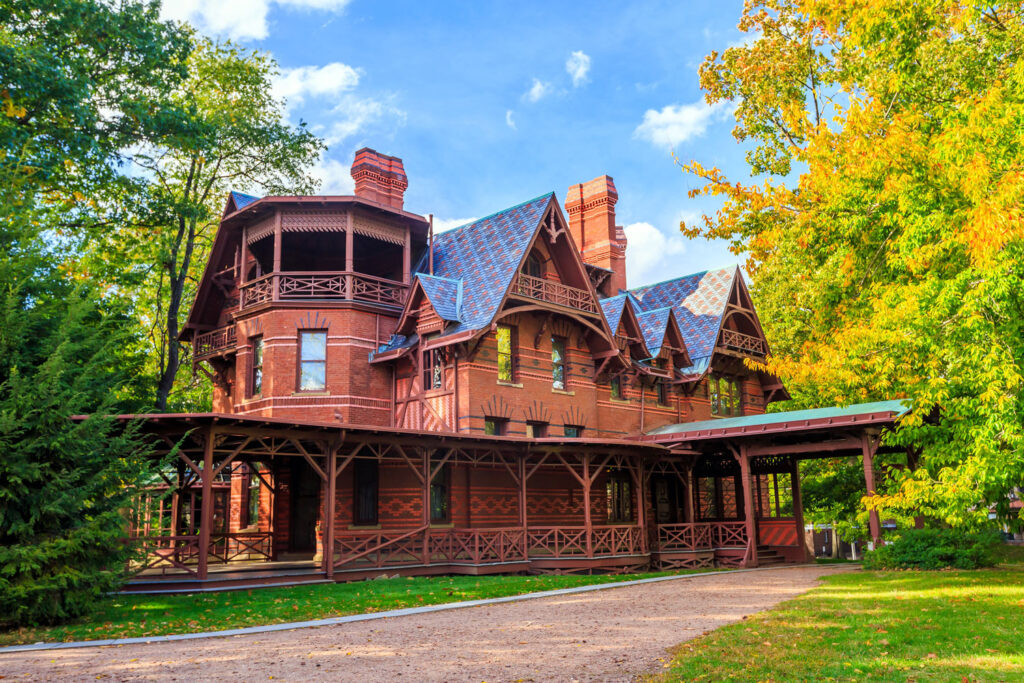Mark Twain said of his Connecticut home: “To us, our house was not insentient matter — it had a heart, and a soul, and eyes to see us with; and approvals and solicitudes and deep sympathies; it was of us, and we were in its confidence, and lived in its grace and in the peace of its benediction.”

Mark Twain House ©f11 photo / Adobe Stock
Personification is a common and powerful way to express our own feelings about buildings. Simple architectural forms – somewhat randomly – are assigned attributes such as strong, feminine, weak, brooding, intelligent, optimistic, and many others. By their association with their builders, architects or physical context, buildings also can be assigned values such as democratic, capitalistic, socialist, even fascist. In his book, The Architecture of Happiness, Alain de Botton discusses at length how we can read buildings like we read faces, and how even the subtlest detail or line is noticed and invites interpretation. All to understand architecture, we transmogrify cold stone into warm bodies.
There is a curious inverse corollary to this practice as well. To create the architectural designs that will one day themselves be personified, we first turn warm bodies into cold statistics. Real people become faceless occupants, users, guests, and patients. We know them not by name, but by demographic profile. Only custom single family residential architecture is a general exception to this practice of abstracting people into statistics. Custom residential clients retain their actual names, personality character traits, ambiguity, emotions and values; they’re just like buildings!
Long before anything is built, architects often use personification as a design tool. They ask rhetorically what “story” the building might be telling. What does the building “want to be?”. Spaces are arranged functionally, but also ceremonially, according to how they might be experienced or “lived,” meaning how they might elicit an emotion in the occupant such as wonder, comfort, confidence, pride, intimacy, or even disorientation and anxiety. These are among the many humanistic qualities that we assign to buildings and which drive spatial organization and form. It may seem that personification is applied to buildings after they are complete, but in fact, the seeds of a building’s humanistic traits are planted and cultivated during design.
Why dwell on personification? Because this concept captures a divide in architectural conception between a top down approach that assumes a given style laid upon whatever context it encounters and a bottom up approach where form and style are just the manifestations of humanistic qualities. A top down approach would be associated with an architect who has a strong style, and is hired by the client to deliver a building in that style, more or less independently of the site and client specifics.
A bottom-up design approach prioritizes the occupant’s experience(s) over form. The building’s final form is “discovered” or “revealed” rather than imposed by stylistic preconceptions. Adherence to stylistic conventions is not overtly considered. A building’s final appearance is a curated manifestation of its design program and their solutions. If a completed building is later classified as “modern” or “contemporary,” it is only as a reflection of its contemporary users living in a modern world, with their modern habits, technologies, transportation and norms. Contemporary society is less hierarchical, and relationships are more fluid than they were in past centuries. This logically results in – but does not necessarily require – formal qualities that are associated with modern architecture such as asymmetry, fluidity, and transparency.
Employing personification as an architectural design tool prioritizes procession and how a building or space reveals itself as one moves through it. Personification leverages the idea that people have a story into making buildings that tell a story about their occupants and their values and in doing so they engage in a conversation with other buildings and people in the present and future. One can see personification as just a useful device to unlock an architect’s creativity, of course, but when a building reflects and embodies the habits, values and lifestyle of its occupants, it can be experienced as if it is “sentient” (to borrow Mark Twain) and a part of the continuous and evolving dialog between people and the buildings that shelter them.
